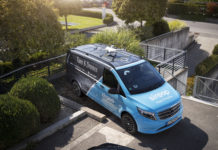Within the next few years, almost all newly-manufactured cars (90%) will have built-in functionality that can contribute to a cleaner environment. Stop-start technology reduces fuel consumption and harmful emissions by reducing the amount of time the engine spends idling, especially when sitting in gridlocked traffic.
And idling is a huge waste of petrol (and money). In the United States alone, idling can waste as much as 3.9 billion gallons of petrol. By comparison, gains from the stop-start technology can be anywhere from three to 10%, potentially as high as 12%; the longer you sit, the more you gain.
Most of the newer car models in South Africa today include stop-start technology. But this technology needs to be coupled with the correct type of battery in order to avoid battery failure.
“The purpose of stop-start technology is to automatically shut down and restart the internal combustion engine,” says Rick Rovelli of Probe. “When the car is stationary or out of gear, fuel delivery is halted and the spark to the engine is lost. The ignition begins again when the car starts moving or the clutch is pressed. This process happens automatically, but some car models enable the driver to choose whether the system is active or disabled by pushing their car’s stop-start button.”
Stop-start systems require a specific type of battery, such as enhanced flooded battery (EFB) which is more expensive, across all battery brands. However, a regular flooded battery (lead-acid battery) can cause battery failure within two to four months of installation.
“As we can switch on our cars so effortlessly, we tend to forget the enormous amount of power required to ignite the engine,” says Rovelli “This is the single most demanding thing that your battery will ever do, so if you’re repeatedly doing this over short bursts and in low-speed drives such as when you’re sitting in a traffic jam, you will need a heavier-duty performer than a standard lead-acid battery.”
EFB batteries are an evolution of the lead-acid battery to deal with the extra power and thermal requirements in a stop-start environment. The main benefits of EFB technology include an improved charge acceptance and greater cyclic durability when operating in a reduced state of charge which is typical of stop-start applications.
In a stop-start system, the EFB battery will have to provide approximately 85,000 engine starts compared to the standard 30,000 starts from a lead-acid battery. This leads to overheating, which significantly shortens its service life.
Besides the stop-start system requirements, cars today are equipped with many power-consuming items.
“Consider all the additional devices that you may have operating in your car – your GPS, smartphone interface and even a DVD screen,” says Rovelli. “New technologies demand a robust, long-wearing and powerful battery to get the job done without fail.”















